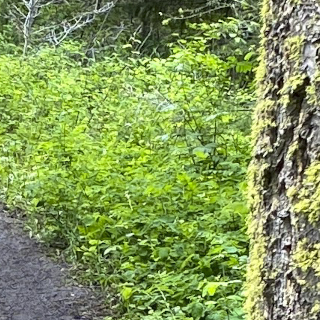Summer 2008
The Cedar Creek Passport in Time crew came from around the United States including volunteers from Oregon, Idaho, and even Washington, D.C. Step one of the PIT project was to remove the dense brush from in and around the standing 1869/1870 log cabin within the site of Louiseville. The brush was removed for two reasons: 1) to provide a potential buffer zone against a wildfire and 2) to stop continued adverse effects to the structure's integrity from vegetation encroachment. In half the time alloted, the PIT crew cleared the dense willow and alder bushes, and even removed a sizable pine tree. Crews were careful not to negatively impact a rare plant species that calls Cedar Creek home, and they were left in place.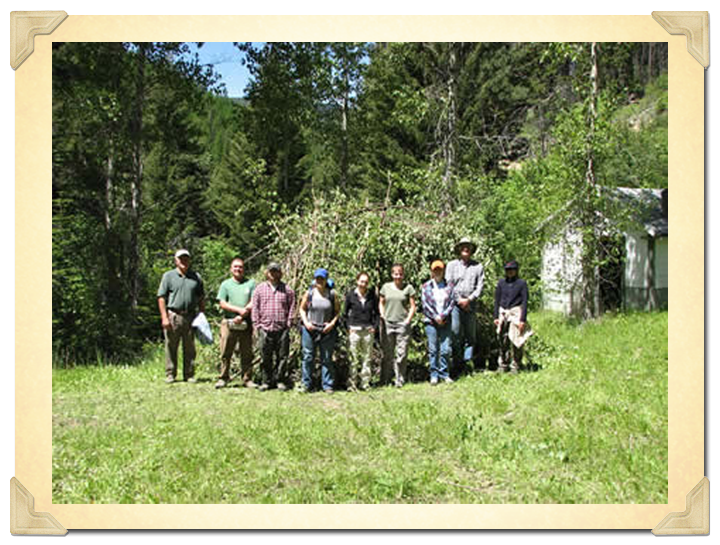
PIT Volunteers excavating at Louiseville
At the same time, a United States Forest Service sawyer from the Superior Ranger District removed two trees near a Chinese rock hearth in China Gulch. These trees were precariously leaning over the fragile 130 year-old hand-stacked rock hearth, and nearby trees were showing signs of advanced root rot. Root rot could have easily spread to these two trees and killed them, leaving them standing but ready to topple in a wind or heavy snow load, thus destroying the hearth in the process. With great skill and patience the sawyer successfully removed the trees, potentially prolonging the life of the hearth for decades. In the future, if more trees threaten the hearths the USFS will take continued proactive steps to remove them.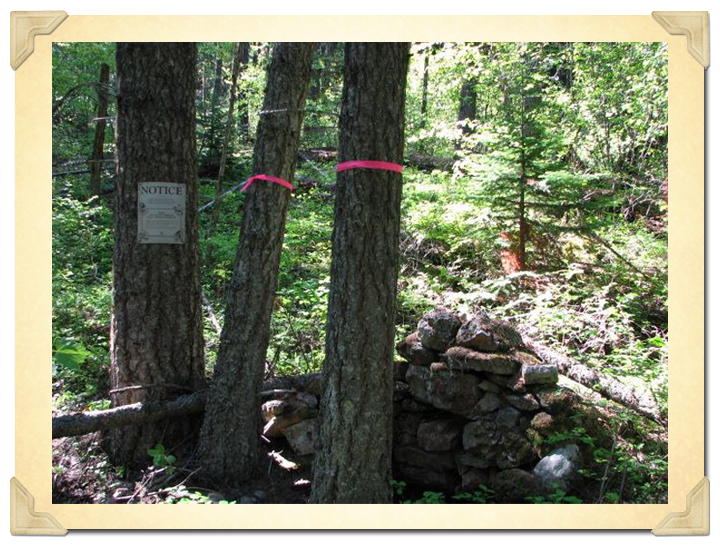
Chinese rock hearth before hazard tree removal.
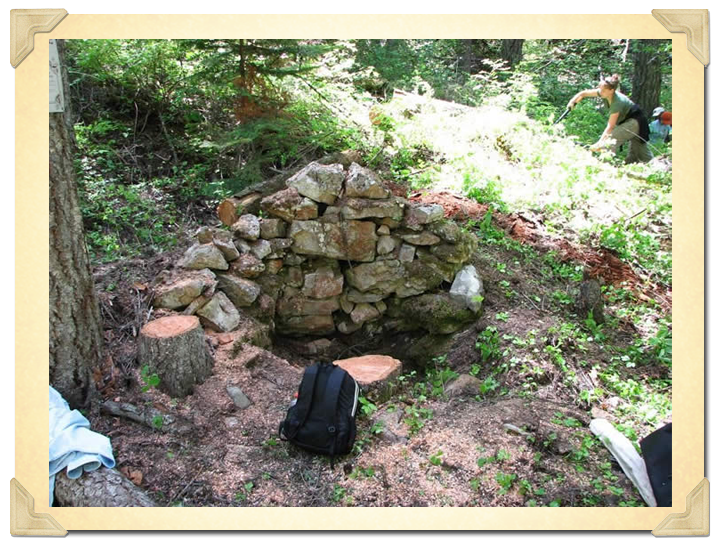
Chinese rock hearth after hazard tree removal.
The second phase of the 2008 PIT project was to conduct archaeological excavations of selected areas within Louiseville and China Gulch. In particular, at China Gulch we chose to excavate a different hearth feature than the USFS did in 1995 to determine if other features contained similar archaeological materials such as the small bones. Following this strategy, crews excavated at two other identified hearths, and tested a fourth possible hearth. Overall, crews recovered several hundred artifacts that appear quite similar to those excavated in 1995, including small bones, porcelain buttons, and bottle fragments. The test of a fourth hearth recovered no artifacts suggesting that the alignment of rocks at this location were natural rather than cultural.
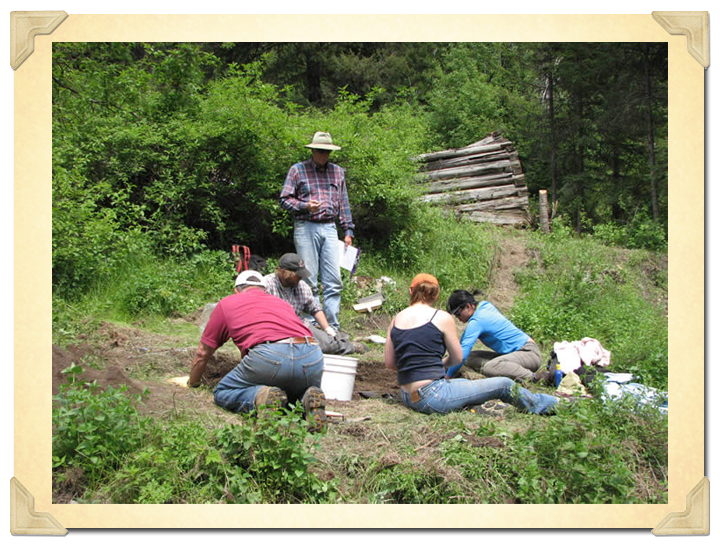
At Louiseville crews excavated three additional units, one to the west of the cabin, and two on the flat open area below the cabin. The excavation nearest the cabin recovered little material, and excavators discovered that this area had been a historic washout path for China Creek as it moved towards Cedar Creek. Thus limiting the potential for an intact archaeological deposit. The other two units were more productive and one level alone on the flat below the cabin recovered several hundred artifacts including Chinese ceramics, opium cans, opium bowl fragments, a tortoiseshell pocket knife, and even half a broken poker chip.
While there has been significant disturbance of areas within Louiseville since abandonment in the 1870s, there is a high potential for intact archaeological deposits and important finds to help us understand the Chinese and Euroamerican experience of Cedar Creek.
Artifacts from China Gulch and Louiseville are helping to illuminate several research questions. From the faunal (animal) remains at both sites there is a distinct difference in the assemblage resulting from different butchering and cooking processes. With the new bone assemblages it does appear that the residents of China Gulch's hearths were on the edge of starvation. In the near future there will be an article published in the journal of Historical Archaeology detailing this starvation pattern of bone wear.
The next step of this project is to install interpretive signs at the site of Louiseville and at the hearths in China Gulch. Right now the sign for the hearths has been designed and is waiting to be manufactured and installed.
This project could not have been completed without the gracious donation of time and expertise of many individuals including the 12 PIT volunteers. In addition, I would like to personally thank the wonderful folks at the Superior Ranger District and the Mineral County Historical Society for their collective time and assistance in every facet of this project. There might be further PIT projects at these sites in the future, so keep tuned. In the meantime please go to the Passport in Time website to find more volunteer opportunities on your National Forests around the country.
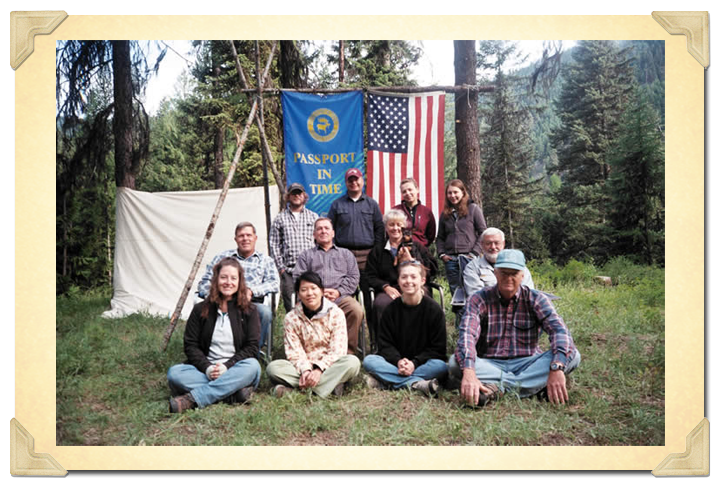
The 2008 Passport in Time Crew, all hardy souls.
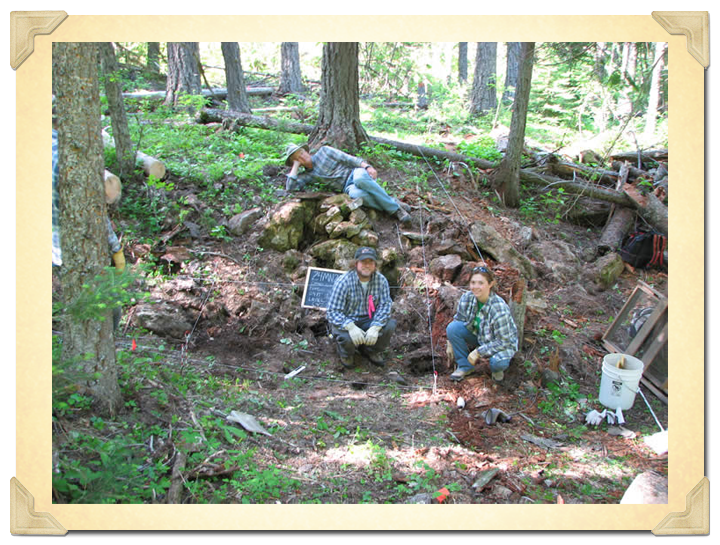
Crews hard at work at newly discovered rock hearth in China Gulch
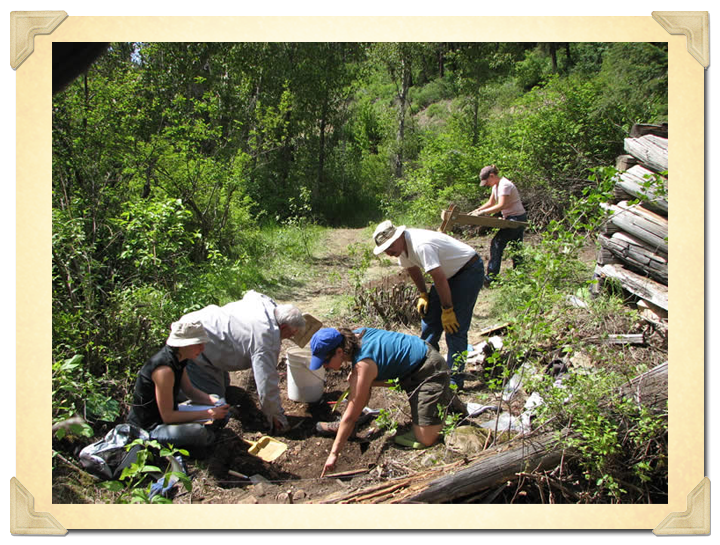
Crews Excavating near the standing 1869/1870 Cabin in Louiseville
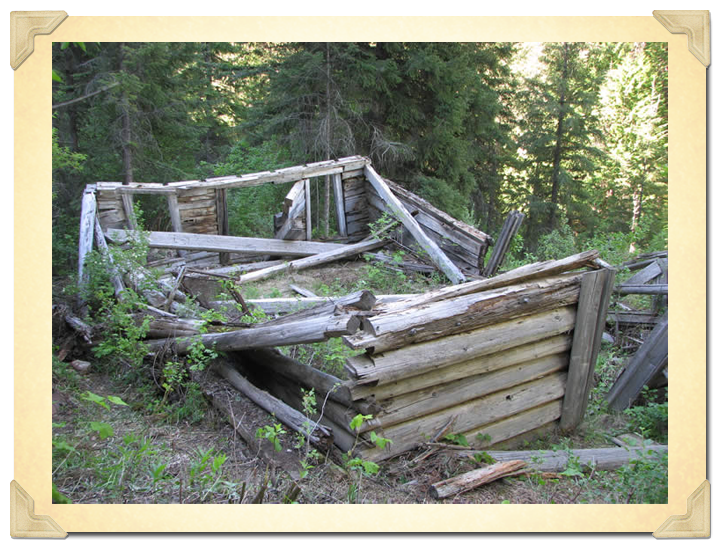
Louiseville cabin after brush removal
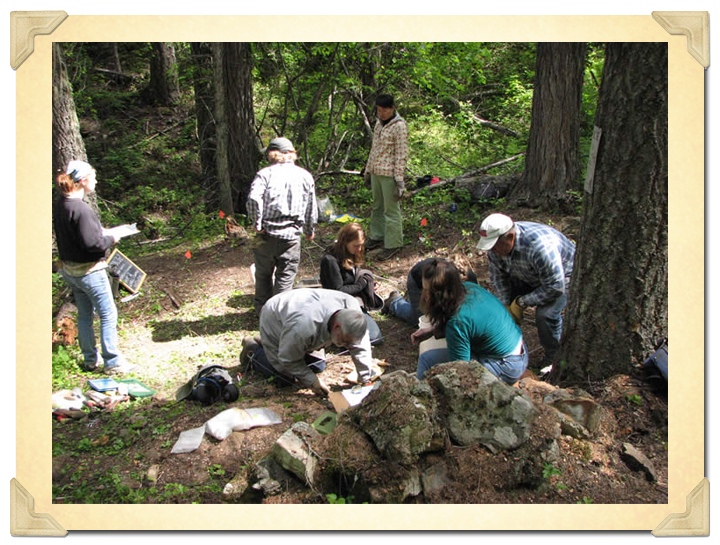
Crews Excavating at a rock hearth in China Gulch
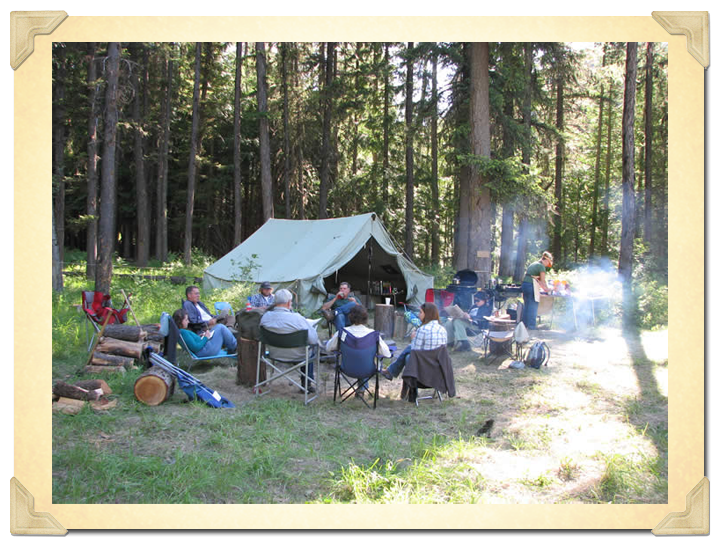
The 2008 base camp, food was prepared by our excellent cook
